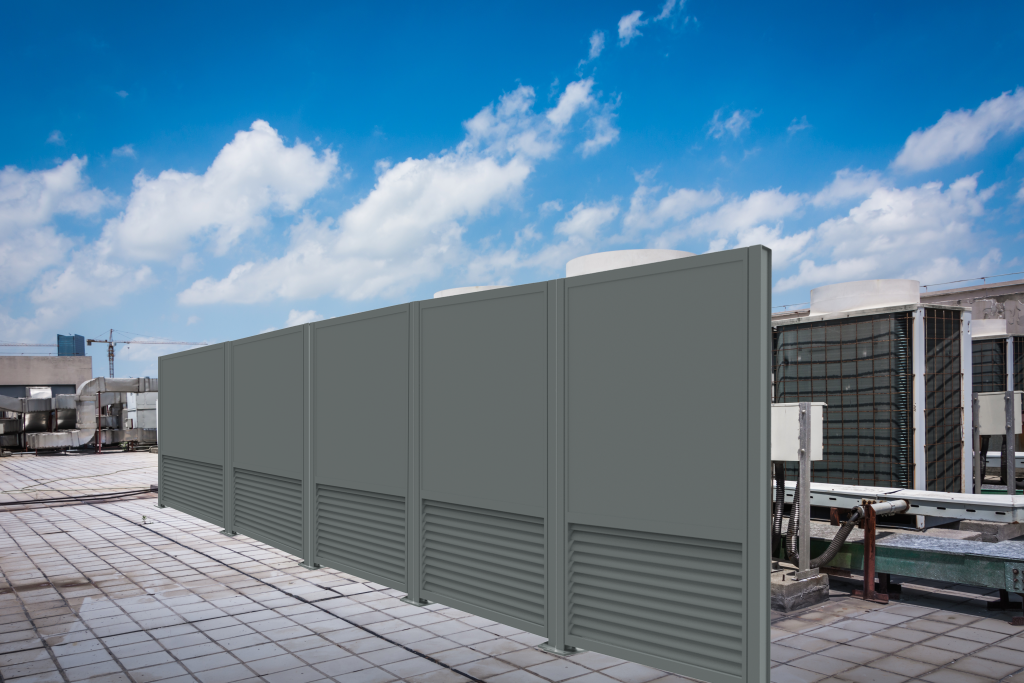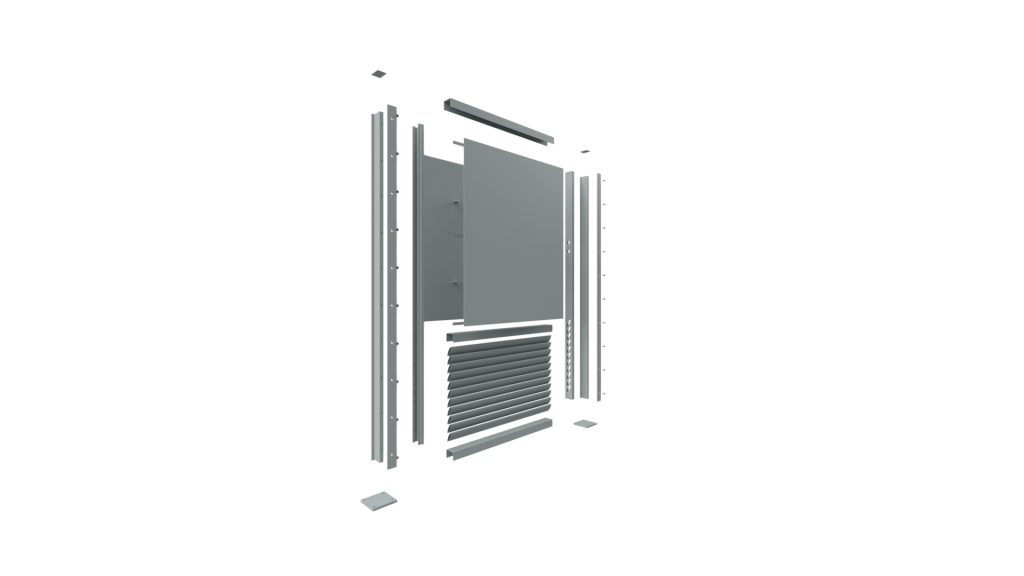Acoustic Screens vs. Soundproofing: What’s the Difference?

Table of contents:
- What are Acoustic Screens?
- What is Soundproofing?
- When to Choose Acoustic Screens
- When to Choose Soundproofing
In transforming a noise-ridden workplace into a quieter environment where productivity thrives, you must think beyond the most obvious of distractions. (There are hindrances to productivity besides excessive chitter chatter.) You must also think about noise generated by mechanical equipment. In industrial environments, this means HVAC units, generators, factory machines, etc. All of which are essential for building operations but which can wear thin on workers’ nerves and impact their job performance. But even in office environments, you must consider noisy mechanical installations. Even here, unending sound pollution can also decrease both the quality and quantity of work that gets accomplished.
Don’t forget, also, that noise pollution can also affect employees’ mental and even physical health. It can produce a litany of effects, including:
- Hearing loss
- Tinnitus
- Chronic restlessness
- Sleep deprivation
All of this impacts not only your employees’ health but their work performance. So it’s in everyone’s best interest to mitigate noise pollution. The question boils down to: “What do you need: Acoustic Screens or Soundproofing?” Here at PalmSHIELD, we manufacture high-quality Acoustic Screens, designed to greatly reduce noise pollution for better, more peaceful work environments. Before we get into specifics, here’s a basic chart for you to look over:
Aspect
Acoustic Screens
Soundproofing
Primary Purpose
Reduce noise within a space
Block noise transmission between spaces
Installation
Portable or semi-permanent
Permanent and often requires construction
Effectiveness
Reduces echoes and background noise
Blocks or eliminates noise completely
Cost
Generally lower and more flexible
Higher due to materials and installation
What are Acoustic Screens?
Now that we’ve covered that, let’s get into the differences between acoustic panels and soundproofing technology, the pros and cons of each, and help you figure out which is right for you. Let’s start with Acoustic Screens, the kind sold here at PalmSHIELD. These panels are designed and fabricated using sound-absorption technology to greatly reduce the transmission of sound waves. They are typically used to control noise in factories and industrial settings. These areas are inherently noisy because of all the equipment involved (tools, forklifts, manufacturing devices, etc.), but there comes a degree where the noise becomes harmful to employees. Acoustic screens help limit and control the noise level. That said, these screens are also essential for office buildings and schools, where reducing noise helps people concentrate.
Features of PalmSHIELD’s Acoustic Screens:
- Material: Our Acoustic Panels use foam-filled foil to absorb and reduce sound waves.
- Design: Here at PalmSHIELD, we fabricate acoustic panels in three distinct styles: acoustic louvers, solid, and semi-air acoustic louvers. Each is custom-designed and fabricated according to the specific spatial and visibility needs of the client.
- Placement: Acoustic screens are typically installed alongside buildings or around mechanical equipment, such as HVAC units. In essence, place these screens between your personnel and the source of the noise.
Acoustic screens don’t completely eliminate noise, but they greatly reduce the intensity, allowing employees and visitors to more easily understand conversations, take direction, and work through tasks.

What is Soundproofing?
Soundproofing refers to techniques and materials used to block or significantly reduce sound transmission between spaces. Unlike acoustic screens, which manage sound within a single area, soundproofing focuses on preventing noise from entering or leaving a room.
Features of Soundproofing:
- Material Density: Soundproofing materials are typically dense and heavy, such as mass-loaded vinyl, acoustic insulation, and concrete.
- Permanent Installation: Soundproofing often involves structural modifications, such as adding layers to walls, ceilings, or floors.
- Comprehensive Coverage: Effective soundproofing addresses all potential sound pathways, including air gaps, doors, and windows.
- Purpose: It’s designed to eliminate or drastically reduce external and internal noise transfer.
Soundproofing creates barriers that block sound waves by absorbing, reflecting, or dampening them. Techniques include decoupling surfaces (e.g., double walls), sealing gaps, and using sound-damping materials to prevent vibrations. For instance, in a music studio, soundproofing ensures that outside noises don’t interfere with recording and that loud music doesn’t disturb adjacent spaces.
When to Choose Acoustic Screens
Acoustic screens are ideal for situations where the goal is to manage noise levels within a single environment rather than completely isolating it. Here are some common use cases:
- Office Environments: Acoustic screens can separate workstations, reducing noise distractions and increasing productivity.
- Restaurants and Cafes: Screens can create cozy, quieter seating areas while maintaining an open aesthetic.
- Classrooms and Libraries: They help create focused learning zones by dampening ambient noise.
Advantages:
- Cost-effective and easy to implement.
- Flexible and movable to adapt to changing layouts.
- Enhances speech clarity and reduces distractions.
Limitations:
- Does not block noise entirely.
When to Choose Soundproofing
Soundproofing is the go-to solution when the goal is to eliminate or minimize noise transmission between rooms or buildings. Some examples include:
- Music Studios: Prevents sound from escaping and ensures high-quality recording conditions.
- Home Theaters: Keeps movie sounds inside the room while blocking external noise.
Advantages:
- Provides maximum noise reduction.
- Permanent and reliable solution for sensitive environments.
Limitations:
- Expensive and time-consuming to implement.
- May require structural changes and professional installation.
Both acoustic screens and soundproofing play vital roles in managing noise, but they serve distinct purposes. Acoustic screens are perfect for reducing noise and improving acoustics within a shared space, while soundproofing is essential for blocking noise transmission between spaces. When planning your noise control strategy, consider your specific needs, budget, and the environment to determine the right solution—or combination of solutions—for your situation. By making informed choices, you can create environments that are not only quieter but also more comfortable and productive for everyone involved.
PalmSHIELD is the nation’s leading contractor for acoustic screening. Contact our sales team today to get answers to questions and get a free quote on your project!
